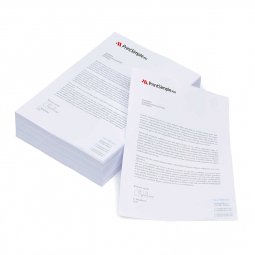What are the best color coverage values?
The color coverage or color saturation of a file can be determined by adding the values of the colors C, M, Y and K. For example, yellow in CMYK is represented by 0 C, 0 M, 100 Y and 0 K. If we add the values together, we get a coverage of 100 % (0 + 0 + 100 + 0). To get orange, we need to add magenta. For example, you get 0 C, 40 M, 100 Y and 0 K. This results in a color coverage of 140 % (0 + 40 + 100 + 0). More information about checking the color coverage.
Minimum color coverage
We recommend not falling below the minimum color coverage of 10 %. Lower values can be printed, but often give a poor result. You must also consider the paper type. Uncoated paper, for example, requires a higher ink coverage as the paper absorbs more ink than coated paper (more information on different types of paper). If the ink coverage is too low, the colors may appear somewhat dull. If the minimum ink coverage deviates from the standard, this will be mentioned in the design guidelines for the product in question.
Particularly light colors (e.g. light yellow, light cyan or light magenta) often have too little ink coverage.
Maximum color coverage
The maximum ink coverage is generally 300 %. Don't forget to take the paper type into account here too. With coated paper, for example, we recommend not exceeding 280%. If you exceed the maximum ink coverage, there is a risk that not all the ink will be absorbed by the paper and stains will appear.
Dark colors in particular often have too much ink coverage. This is because more K (black) is added to the CMYK color. To simply obtain the color black, it is best to use 0 C, 0 M, 0 Y and 100 K, which corresponds to a color coverage of 100 %. This is recommended for reading text. For surfaces that require a richer black, you should choose a different composition. More information on the different shades of black.



